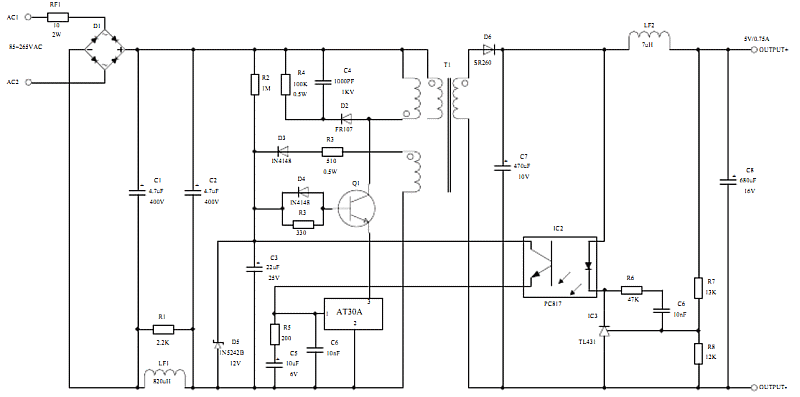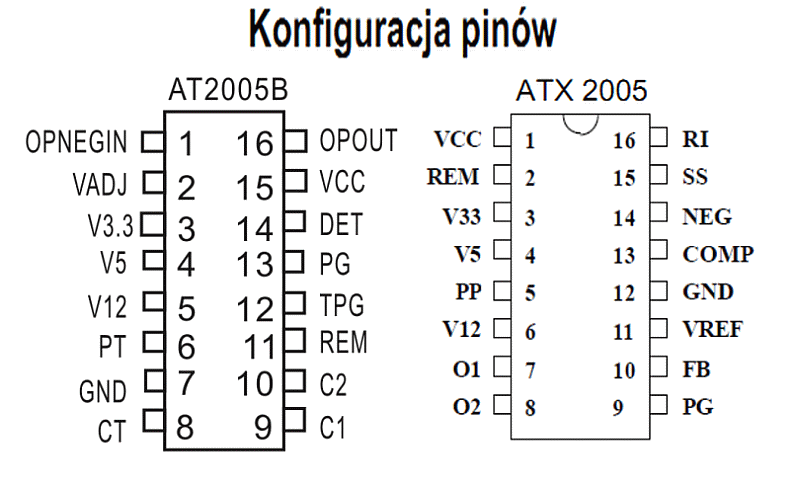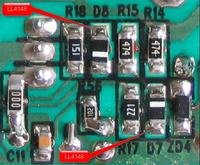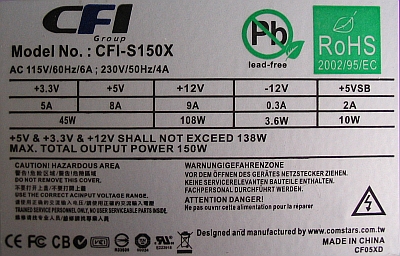
Hello.
The history of this power supply is somewhat complicated, and the fault seems to be simple.
I worked yesterday on the computer until quite late. The computer worked for 4-5 hours without a break (usually this is its daily working time). Around 22:00 I turned it off, but after switching it off I noticed the keyboard lights going out every few seconds. Thinking that this is a problem with closing the system, I turned on the computer again. However, it required a slightly longer holding of the switch - which was no longer a normal symptom. I turned it off by holding the 4 sec. Switch. I disconnected the power supply completely from the mains until the morning.
This morning, once again, the same symptom appears again. The voltage measurement on the 5VSTB pin has shown that the voltage disappears every few seconds. The power supply has been removed. The first thing is to check whether the electrolytic capacitor on the PP output has accidentally dried up. Optically it looked OK, but it was replaced with a new 1000?F / 10V (of course LowESR ). Unfortunately, this has not eliminated the vulnerability. Measurements of a few key PP elements would not show that they were damaged. I mentioned it prophylactically yet 10?F / 50V and 22?F / 50V on its original side.
The power supply continues to "sample" on the 5VSTB line and can not be switched on the artificial load. There is also an additional symptom that was noticed during the measurements. When the voltage behind the bridge is "normal", ie 285V, the PP converter samples, but when the power supply is disconnected from the mains and the voltage starts to drop slowly, at 216V the PP inverter stops sampling and stable output voltages appear: + 5V (STBY) and + 15.8V (to PWM), and the power supply has a tendency to start properly for a fraction of a second.
And now I have a dilemma whether the fault should be associated only and exclusively with PP, or with the original side behind the bridge, or whether after the secondary in the driver too weighing its 15V? The last one I am inclined to exclude, because the power supply wants to start.
Well, what is the chip AT30B (TO-92)?
The power supply is two years old, as you can see, because it has hardly been dusted, and it is a 150W unit in several models of ITX enclosures.
It is based on elements:
Inverter PP: MJE13003, AT30B (TO-92), PC817, TL431 (SOT-23)
Main converter: 2005AZ, 2x MJE13007, 2x STC945, 2SD882
Voltage on integrated circuit 2005 in stand-by mode:
1 - 4.2V floats
2 - 4.9 V floats
3 - 0.03V
4 - 0.0V
5 - 0.23V floats
6 - 0.0V
7 - 2.30V floats
8 - 2.30V floats
9 - 0.0V
10 - 1.0V floats
11 - 1.0V floats
12 - 0.0V
13 - 0.06V floats
14 - 0.01V
15 - 0.01V
16 - 1.2V floats
Voltage when the power supply will temporarily start at 216V on the original side, can not be measured because they quickly disappear, and the autotransformer, unfortunately, is missing at home.
Photos inside (straight from the camera):

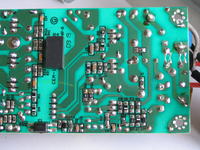
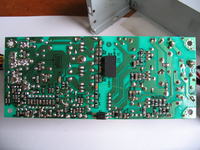



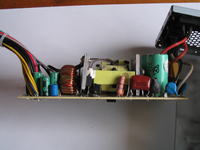
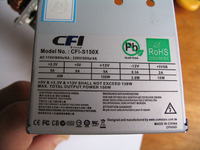
Added after 3 [hours] 45 [minutes]:
The problem of the AT30B integrated circuit has somewhat unraveled and I got to the copy of the note, and this is a SMPS controller certified by ATC Technology.
I corrected TONI_2003.



